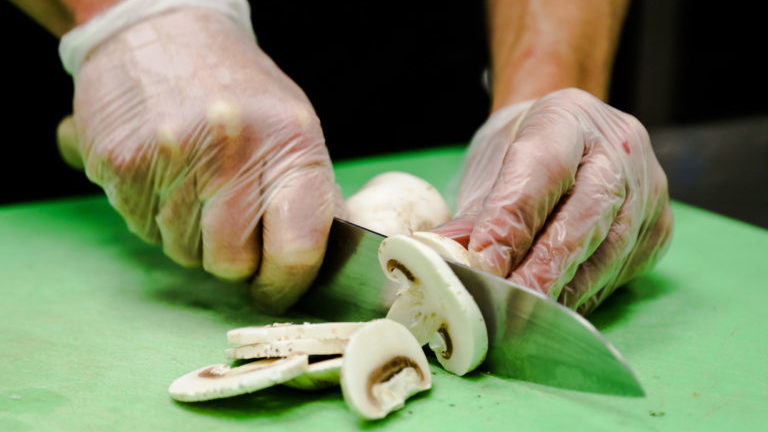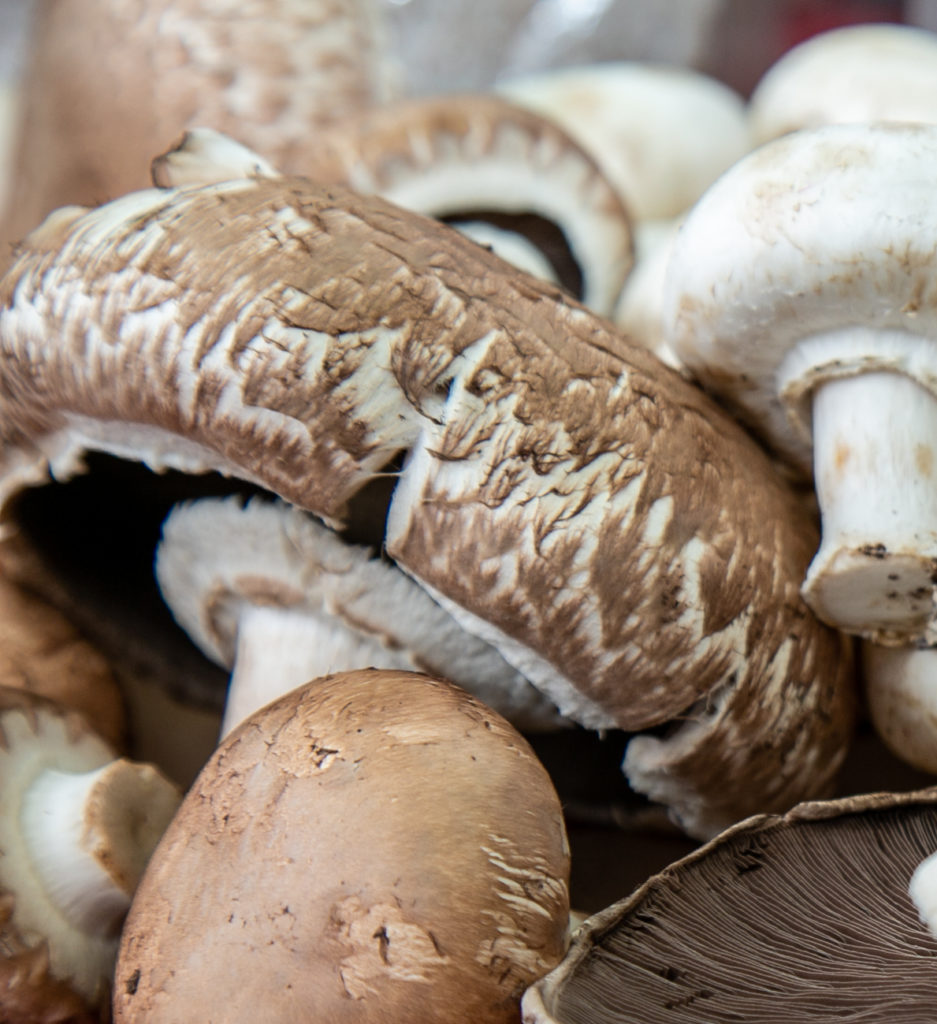 Schools
Schools
Fresh Mushrooms: Prep Tips and Tricks
When it comes to school meals, quality is key, but we have another important factor to remember too – prep time. If we can’t produce a high quality meal in a reasonable amount of time, then we’re going to have problems! We know when those kids come to us from class, they are hungry and ready to eat, so we had better be ready.
Sometimes it can feel a little overwhelming when we begin introducing more scratch-made recipes into our menus – it may mean more ingredients, more steps, and more cooking time. So in this post, we’re offering some tips and tricks for speeding up production of your mushroom recipes, because who doesn’t love saving a little bit of time?
Mushroom Sizes for School Meals
Mushrooms come in many shapes and sizes, but some are better suited for our production needs than others. Here are some common sizes and their ideal applications in meals:
- Jumbo mushrooms are a little more expensive and used mainly for stuffing, which is not often seen in school meals, but can be used in catering instead of buying premade ones.
- Button mushrooms are also at a premium and are generally used whole and can be sauteed, roasted or marinated raw. And a little reminder – buttons are not a variety, they are a size!
- Medium Fancy are sized and consistent for use. They’re easier to slice and portion since they’re similar in size, and the cooking times are consistent. They are usually at a good price point for schools, and nice to use in our programs since we know some kids like each bite of their meal to be the same size and shape! These are definitely going to be the workhorse in your operation and are the most common size we see in schools.
- Foodservice mushrooms are more of a random size and generally not as pretty as the others. This is price effective if you have equipment to process it on and a skilled culinary staff.

Purchasing Pre-Processed Mushrooms
When you look to speed up prep, the easiest answer is to outsource it by purchasing a value added product. There are a variety of fresh, refrigerated mushrooms that can make it easier to incorporate mushrooms into many parts of your menu, and are often already washed and some with added Vitamin D as well. When looking at yield, the pre-processed mushrooms can be a great value too. Check with your distributor or produce house for their lineup of mushrooms, but usually you are going to find some general sizes and types available.
Thick Sliced
The thick sliced mushrooms are great for roasting and adding to stir fries or using fresh on the salad bar. These are the ones referred to in the Food Buying Guide, with about 7 slices crediting for a ¼ cup other vegetable.
Thin Sliced
The thin sliced mushrooms we have fallen in love with! These mushrooms come in a bucket, 5 pounds per pail and are ready to use in any gravy, sauce or soup! The super thin cut helps the mushrooms melt into the sauce or gravy. Many districts are offering vegetarian soup options, which is a great menu addition, but the flavors can be flat if we’re watching our sodium levels. So, adding these thin mushrooms really boosts the flavors of your recipes!
Either of these slices can go on pizzas or on toppings bars. The thick retains its bite, the thin has great coverage and folds into dishes easier.
Using a Food Processor
If it’s available to you, using your food processor to slice, dice, chop, and even purée your mushrooms is a great option too. We have seen districts slice mushrooms on a slicer, in a robot coupe, and some have even shredded them using the cheese grater on the mixing bowl! If you want to blend your mushrooms into meat, the food processor does a great job as well, just make sure you have the proper blades for each of these applications. The size of your mushroom will also determine the type of cut you go for, and note, blenders do not work for mushrooms.
Remember to Batch Cook
In general, do not prep mushrooms in advance of food prep as oxidation can occur and impact the appearance and quality of the product (this is where the pre-sliced options really help!). A best practice is to use the mushrooms the same day you process them.
For all of your recipes, batch cooking is a must! This method of cooking is preferred since we do not want to cook too far in advance, trying to hold food for three lunch periods. Consider the timing for prepping, cooking and serving when using batch cooking. However, there may be times and places where we need to hold food for extended periods, and that is where adding mushrooms to your entrees really shows its beauty. Those mushrooms are little sponges and will help hold onto the moisture!
We hope these tips and tricks will help you make your meals shine and make it even easier to incorporate mushrooms throughout your menus. Do you have a tip or trick for incorporating mushrooms into your menus and saving time? Email us at SchoolMeals@mushroomcouncil.org!


We collect, use and process your data according to our Privacy Policy.